Event 2
Citizen's participation and social innovation in green urban spaces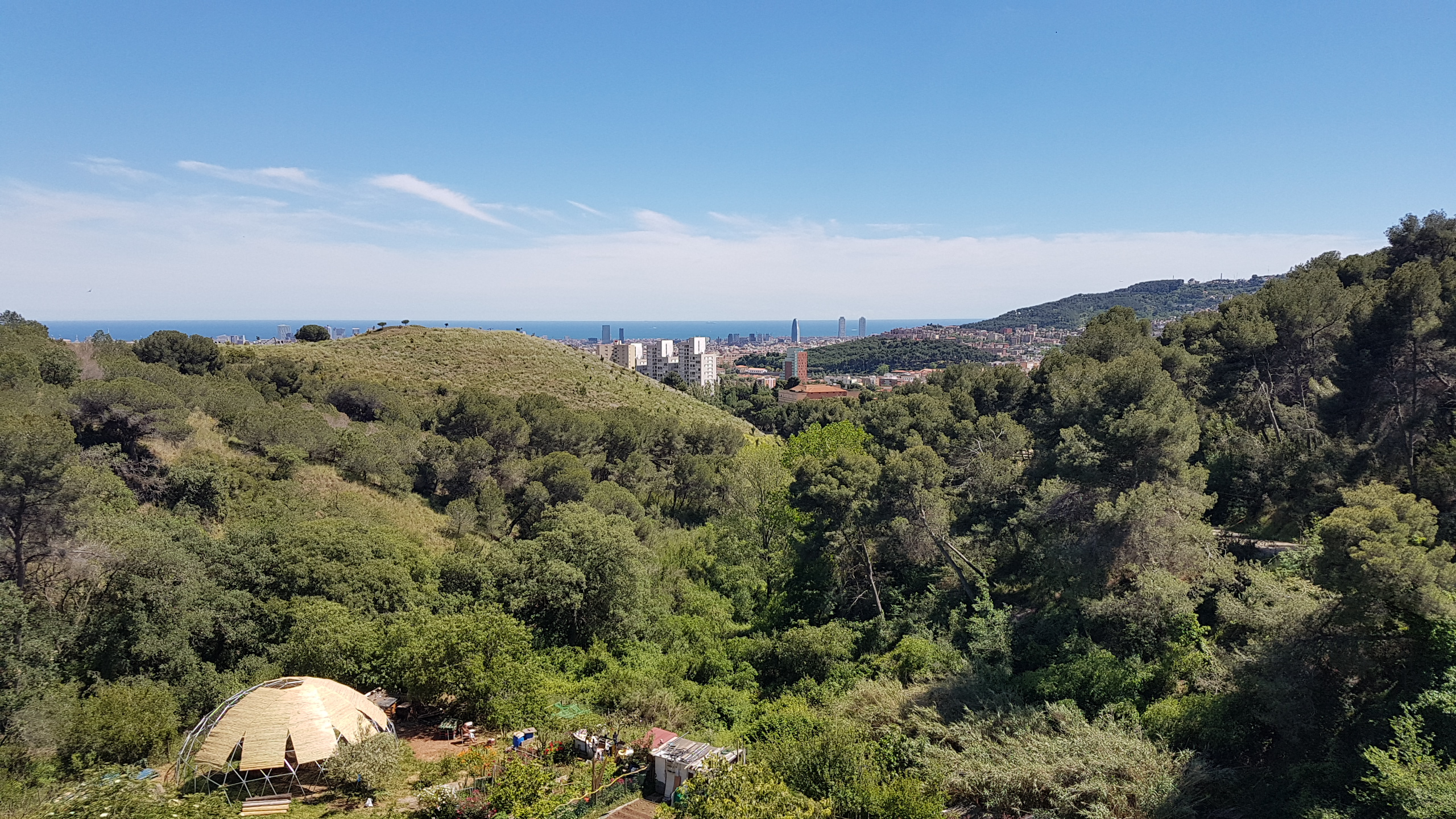
This second event of the Progress Project is organized by Eco-Union, from the 8th to the 12th of May 2017, in Barcelona, Spain.
This 5 days training presents experiences, practices and methodologies for citizen participation in urban green spaces management, approaching top/down and bottom-up, as social innovation theory and practice. A blended training methodology, combining master classes, technical visits and problem resolution in working groups.
EU Participants
Conferences
Technical Visits
Workshops
Target audience: Civic environmental officers, landscape designers, architects, environmental engineers, green space design and management professionals, and students.
Class size: 35 participants
Course language: English
Local government partners: Urban Ecology Agency of Barcelona
Local academic partners: Barcelona Laboratory for Urban Environmental Justice and Sustainability (BCNUEJ at ICTA UAB), Public
Training criterias
- Critical thinking: theory and approaches, Interdisciplinary trainers.
- Planning training oriented: diagnosis techniques and design solutions
- Strength global vision Local: relevant and diverse case studies; it should be reinforced to understand a particular urban reality.
- Approach place making: Field case study as training session accompanied by academics and experts.
- Solution building: Working group sessions to approach multidisciplinary solution building.
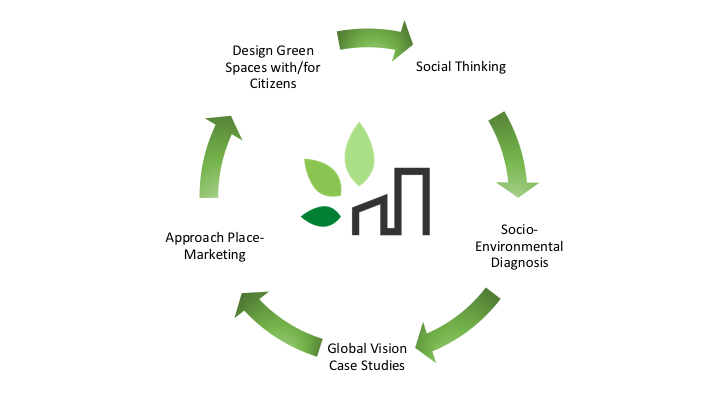
Summary
Day 1 | The Commons and Participative Democracy
The first day training focuses on citizen’s participation approaches, social innovation and participative governance. This session is designed and delivered by the IGOP (Public Governance Institute, Barcelona Autonomous University).
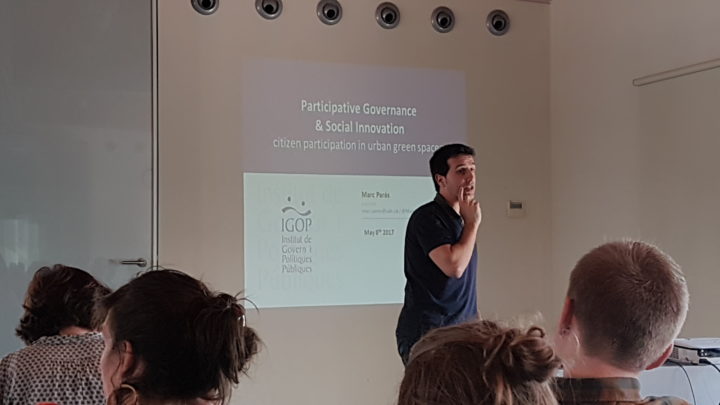
Participative Governance & Social innovation (Dr. Marc Pares, IGOP)
- Participative democracy
- Social innovation
- Mapping and engaging social stakeholders
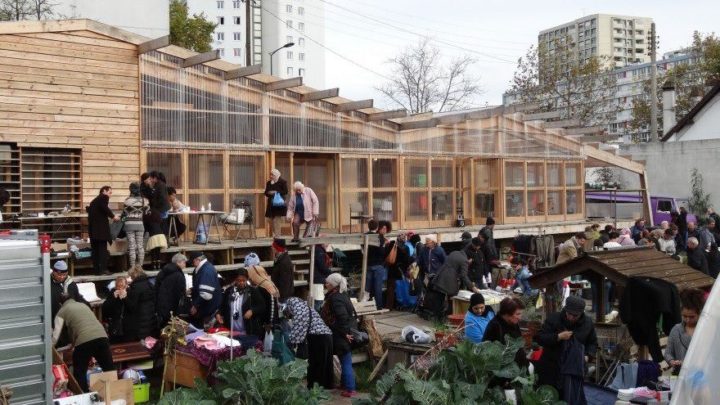
The Commons: participative approaches in green urban spaces (Dr. Mara Ferreri, IGOP, UAB)
- The commons and urban public spaces.
- Citizen’s participation approaches (Top-down/BottomUp).
- Presentation case studies from different cities.
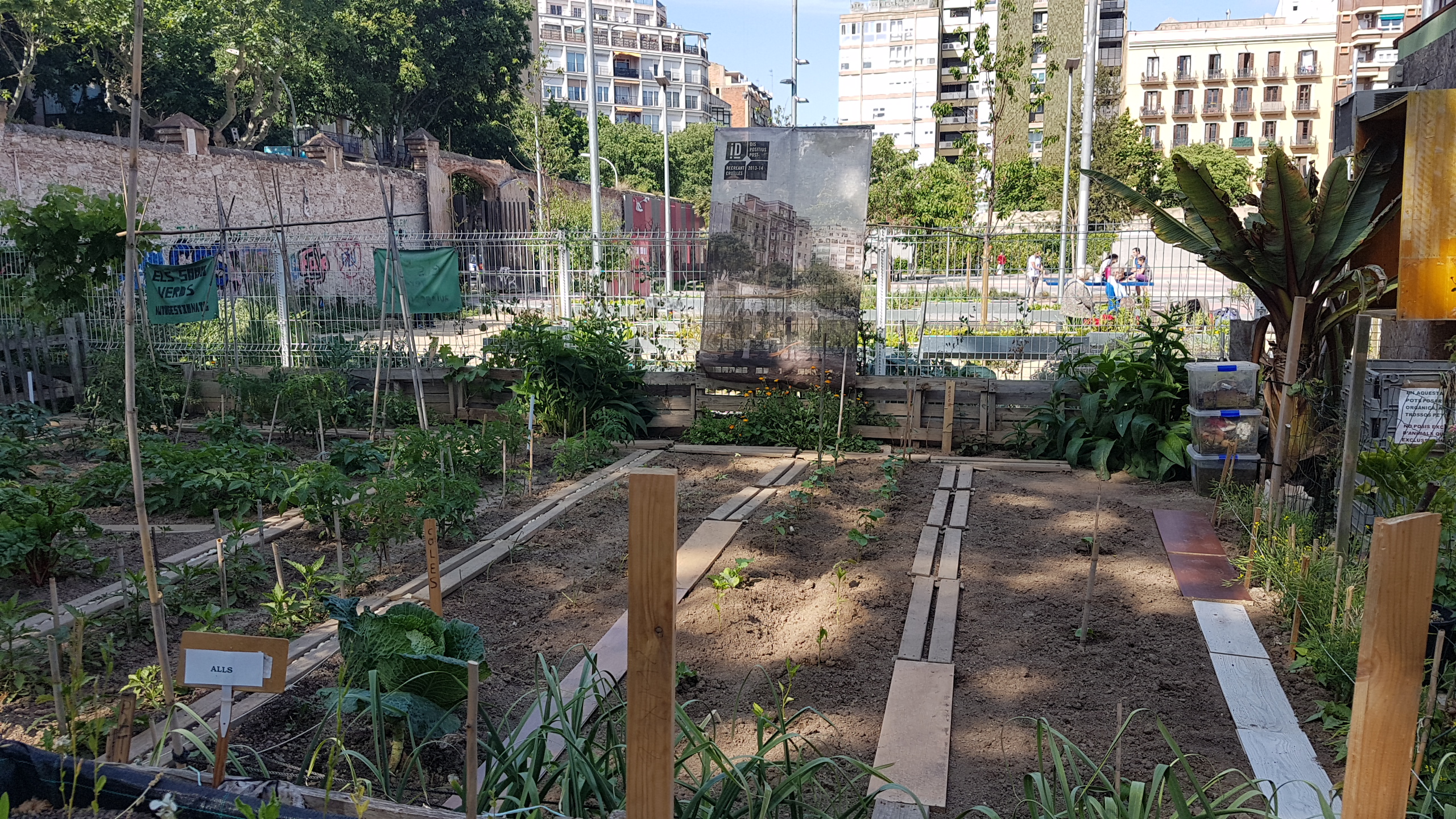
Technical Visit: Espais Buits – Espai Les Germanetes
The ESPAI GERMANETES is a neighborhood project between the neighborhoods of Sant Antoni and the Esquerra de l’Eixample. It is a meeting place to discuss the neighborhood, its problems, and to build innovative solutions through processes of active citizenship.
Reading references
Espai Germanetes/Recreant Cruïlles:
> https://recreantcruilles.wordpress.com/espai-germanetes/
> http://bcncomuns.net/es/cpt/germanetesrecreant-cruilles-2/
Pla BUITS:
> http://ajuntament.barcelona.cat/ecologiaurbana/ca/pla-buits
Day 2 | Green Urban Policies and socio-environmental issues
Basic concepts and approaches on green urban spaces and socio-environmental issues (ege. Green gentrification, inequalities, place making) and presentation of Barcelona case studies. Activity design and delivered by ICTA (Environmental Science & Technology Institute, Barcelona Autonomous University).
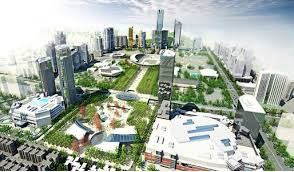
Green Urban Space: Approaches, issues and Barcelona Case Studies (Dr. Isabelle Anguelovski, BCNUEJ – ICTA)
- Green planning and policies in cities
- Socio-environmental conflicts
- Assessing social-environmental issues
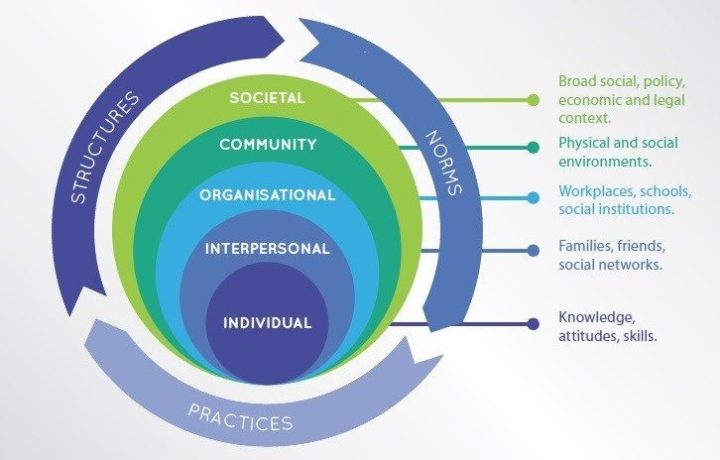
Health implications of greening and green gentrification (Dr. Helen Cole, BCNUEJ)
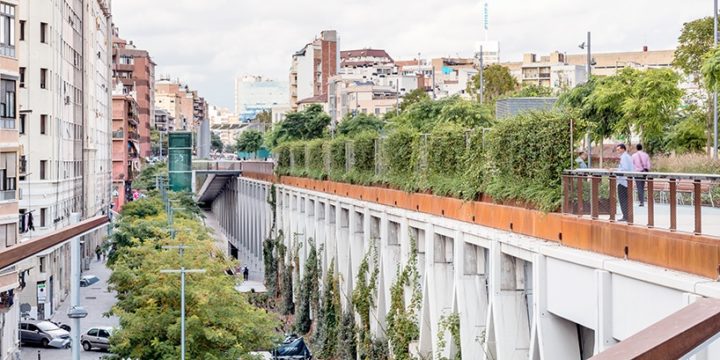
Technical Visit: Jardins de la Rambla de Sants (Sants Montjuic District)
After more than a decade of preparation, contention and construction, the Jardins de la Rambla de Sants opened in the summer of 2016 as a nearly 800-meter raised ‘rambla’ ,hovering over a corridor of railway lines that cuts through the neighbourhood. The linear arrangement ,of playgrounds, paths, and gardens with 160 trees and 85.000 native plants covers 20.000 square meters and is largely situated at the second- or third- floor level of the surrounding buildings.
Reading references
Newspaper article on the opening of the elevated ‘rambla’:
> http://www.elperiodico.com/es/noticias/barcelona/asi-nuevo-jardin-elevado-barcelona-sants-5331240
Design blog entry on the Rambla de Sants:
> http://www.designboom.com/architecture/jardins-de-la-rambla-de-sants-elevated-park-above-railwaylines-barcelona-11-23-20161/
Initial critiques on the effects on neighbor privacy and well-being:
> http://www.lavanguardia.com/local/barcelona/20160822/404127352981/rambla-sants-vecinosintimidad-distancia-balcones.html
> http://lameva.barcelona.cat/bcnmetropolis/en/entrevista/isabelle-anguelovski-inversors-poderososshan-apropiat-de-lagenda-ecologica/
> https://www.designboom.com/architecture/jardins-de-la-rambla-de-sants-elevated-park-above-railway-lines-barcelona-11-23-2016/
Day 3 | Socio-Spatial Diagnosis
Focus on socio-environmental diagnosis in the planning and management of green urban spaces. Barcelona Superblock project will be presented by the Barcelona Ecology Agency. This case study will be used for the teamwork session. The session will be delivered by the Urban Ecology Agency, Eco-Union, and by professional architect and Sociologist (Pla Estel).
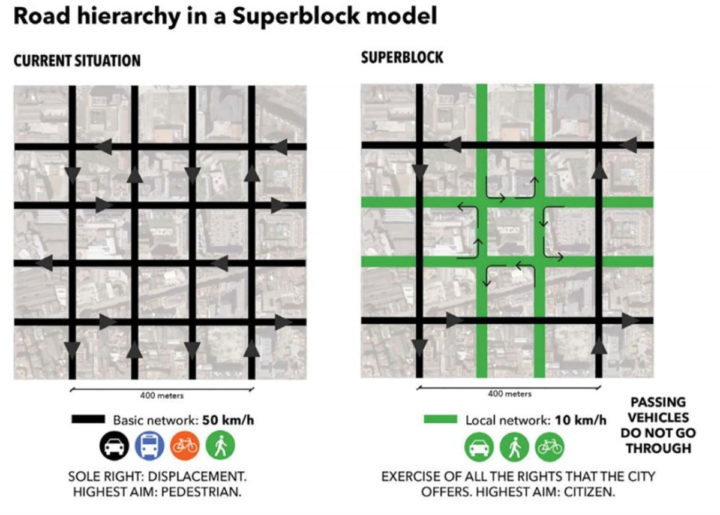
Case Study and Group Building
- Presentation Case Study for teamwork (by Barcelona Urban Ecology Agency) – Superblock
- Define work areas, challenges and make groups by specialization
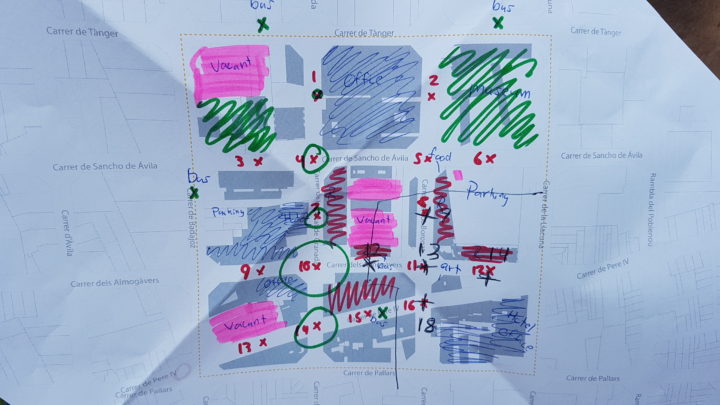
Socio Spatial Workshop
How to approach the public space diagnosis: Social perception analysis and information gathering. (By Pla Estel)
- Define diagnosis structure (diagnosis is already given, so the group can advance)
- Applied strategic diagnosis, share with groups and feedback group diagnosis.
- User vision: how to approach case study (social layers: emotions, sensivity, etc.)
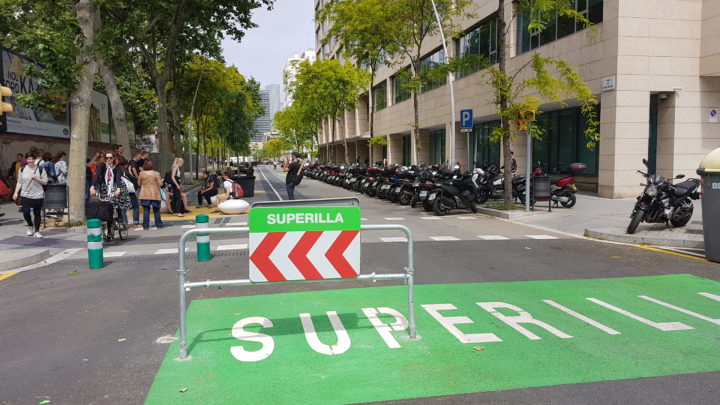
Technical Visit: Superilla Poble Nou (Sant Martí District)
After more than a decade of preparation, contention and construction, the Jardins de la Rambla de Sants opened in the summer of 2016 as a nearly 800-meter raised ‘rambla’ ,hovering over a corridor of railway lines that cuts through the neighbourhood. The linear arrangement ,of playgrounds, paths, and gardens with 160 trees and 85.000 native plants covers 20.000 square meters and is largely situated at the second- or third- floor level of the surrounding buildings.
Reading references
City of Barcelona Superilles (Superblocks) Project:
> http://ajuntament.barcelona.cat/superilles/ca
> http://www.slideshare.net/Barcelona_cat/mesura-de-govern-oomplim-de-vida-els-carrers-llaimplantaci-de-les-superilles
Guardian article, “Superblocks to the rescue: Barcelona’s plan to give streets back to residents”:
> https://www.theguardian.com/cities/2016/may/17/superblocks-rescue-barcelona-spain-plan-givestreets-back-residents
Day 4 | Place Making – Working Groups
Focus on citizen’s participation processes in the planning and management of green urban spaces. The session is designed and delivered by Pla Estel, an independent organization specialized in participative urbanism, with the support of eco-union for the teamwork activities.
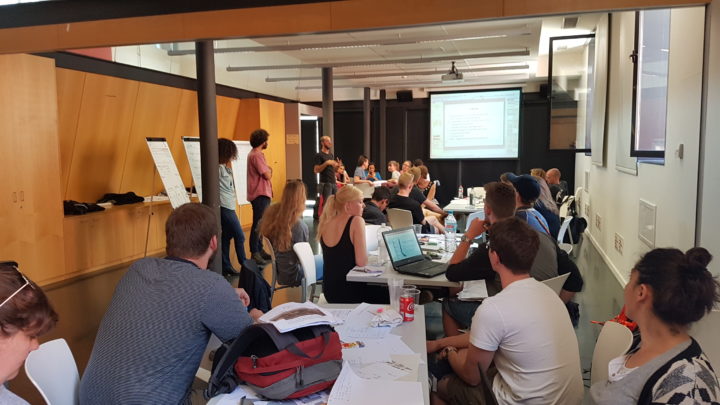
Inclusive design of green public spaces
- Participative processes in urban public spaces
- Designing for Top Down / Bottom-up (Human centre design)
- Teamwork
Day 5 | Presentations and closing
Recap of all the learnings from previous days and presentation of the work groups.
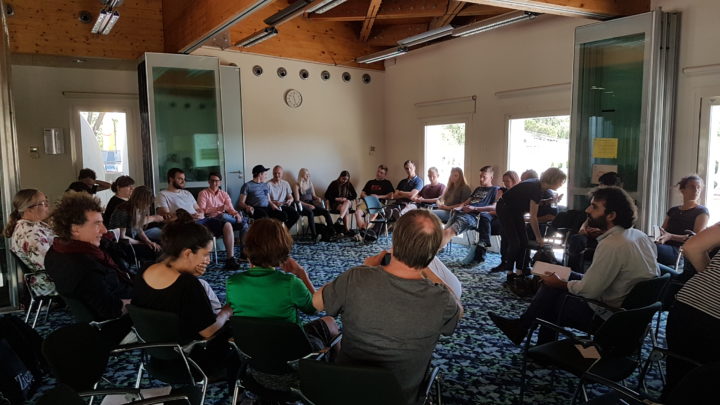
- Presentation of the group projects
- Sharing experiences & Training Diplomas
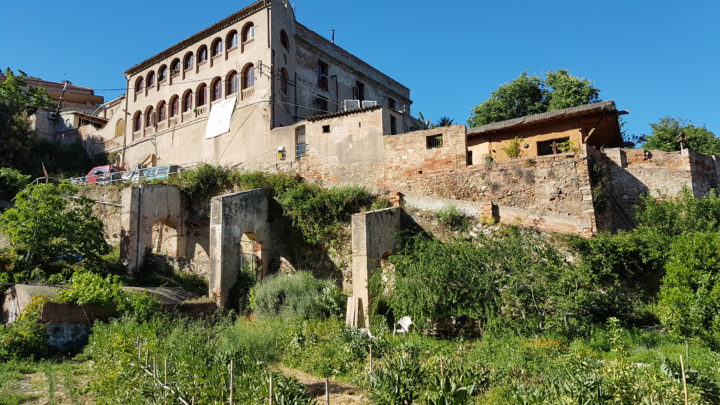
Technical Visit: Can Masdeu
Can Masdeu is an occupied garden, social centre, and residence to activists and families concerned with climate change, agro-ecological and agroforestry land management, social justice, free education, and responsible consumption. Originated in 2001, this was the site of an international gathering of climate change activists who famously squatted the property and resisted removal in 2002.
Reading References
Can Masdeu website descriptions:
> http://www.canmasdeu.net/who-are-we/?lang=en
> http://www.canmasdeu.net/our-history/?lang=en
Wikipedia page on Can Masdeu:
> https://en.wikipedia.org/wiki/Can_Masdeu
Local partners and supports

This event and this program are the sole responsibility of its authors and the Commission is not responsible for the use that may be made of the information contained therein.

This project has been founded by the EU Commission under the Erasmus+ program
This website is the sole responsibility of the author and the Commission is not responsible for any use that may be made of the information contained therein.




